
贫富差距严重 亚裔募捐募圣诞玩具互助过节
世界新闻网
12/25/2021

根据2019年统计,亚裔美国人家庭年收入平均约8万5000元,但若进一步细分,印度裔家庭年收入最高,平均有11万9000元,财富光谱的另一个极端则是缅甸裔,家庭年收入平均为4万4000元;专家指出,若以8万5000元作为收入指针,政府的许多补助计划以及慈善组织救济方案,便不会把亚裔列入服务对象。
国家广播公司(NBC)报导,来自洛杉矶地区商界、法律界的一群亚裔美国人,今年耶诞节前便成立玩具募捐活动(toy drive),协助需要帮忙的亚裔民众过节。
「亚洲太平洋裔美国人佳节玩具募捐」(APA Holiday Toy Drive)共同创办人谭戴安(Diane Tan,音译)指出,某些规模庞大的玩具募捐活动,似乎都没有提供玩具给亚裔与太平洋岛国族裔(Asian Americans and Pacific Islanders,AAPIs)社区。
她说:「我们因此想到,我们应该想办法,至少为我们自己社区里的低收入家庭儿童提供一些玩具。」
May 22, 2021
The Asian American Pacific Islander population is extremely diverse, culturally and economically. According to a recent analysis by the Pew Research Center, Asian household incomes range from $44,400 to $120,000. Subgroups at the low end aren’t represented by the median data. Here’s a closer look at the growing income gap among Asian Americans, how it started and what’s next.
「亚洲太平洋裔美国人佳节玩具募捐」第一次办活动是在2000年,接下来几年需求量持续增加。
谭戴安说,许多家庭因为收入减少,可能买不起玩具给孩子。
亚裔社区维权人士表示,入冬之后的几个月,低收入亚裔家庭特别容易出现三餐不济的状况,气候恶劣是影响因素之一。
纽约南亚裔老年人关怀组织「印度之家」(India Home)项目经理达塔( Shubhra Datta)便说,遇到严寒气候,许多亚裔民众就待在家里不出门,靠着家中存粮配给过日子。
据统计,「印度之家」共计1500名会员当中,约有20%经常面临食物不稳定的难关,老年人因为语言障碍、缺乏科技知识,申请「营养补充援助计划」(Supplemental Nutrition Assistance Program,SNAP)或粮食券(food stamps)往往遭遇困难。
住在纽约皇后区的63岁孟加拉移民罗娜卡‧贾翰(Rawnak Jahan),冬天如果路面结冰就很难出门,连上超市买菜都充满挑战,日前背部受伤则无法行走,无法久站。她靠着「印度之家」送餐到府服务吃饭,因为配送的食物不是三明治,而是家常菜。

Asian Americans have the biggest wealth gap. Here’s how they’re helping one another this year.
With winter comes isolation and food insecurity for lower-income Asian Americans. Community organizations are working to combat that.
By Sakshi Venkatraman
12/25/2021

In the wintertime, the road outside of Rawnak Jahan’s home in Queens, New York, is often covered in ice and snow. For the 63-year-old Bangladeshi immigrant, leaving the house and trekking to the grocery store might seem daunting in itself. But with a recent back operation leaving her unable to walk, food access is even more complicated.
“I am not able to cook because I cannot stand for a long time,” she told NBC Asian America. “After 10, 15 minutes, I have to sit down.”
Jahan, who came to the U.S. with her two children in 2015, relies on the community organization India Home to bring meals to her door. It’s not just sandwiches and canned goods, but food that reminds her of what she might make at home.
Experts say the holidays can pose challenges for many in Jahan’s position, who have the need but don’t know where to turn for support. And a general lack of understanding about the wealth disparity that exists under the “Asian American” umbrella might keep resources out of their reach.
Asians in the U.S. have the greatest wealth gap of any ethnic group, according to a 2018 report by the Pew Research Center. Those in the top 10 percent of income distribution earn almost 11 times as much as those at the bottom, a disparity that rapidly took shape from 1970 to 2016.
The average household income for Asians in 2019 was around $85,000. But without picking it apart, that figure paints an incomplete picture. Indian families in the U.S., the highest earners under the umbrella, make $119,000 a year on average. Burmese families represent the other end of the spectrum, with just $44,000 a year coming in. Bangladeshis like Jahan, concentrated in New York, have a median household income of $59,500.
But the $85,000 statistic is what gets the most traction, experts say, and that makes it so that government programs and charitable organizations are less likely to identify Asian communities to serve.
A lack of toys for lower-income Asian kids
In Los Angeles, a group of Asian Americans in business and law set up a holiday toy drive for this reason.
“Those larger toy drives did not seem to be providing toys to AAPI communities,” said Diane Tan, one of the founders of the APA Holiday Toy Drive. “That’s when we thought, we should try to at least provide some toys to children of low-income families in our own communities.”
The first one was held in 2000, with toys distributed to families through community organizations in their neighborhoods. Demand has only grown since then.
“Last year, the need was the largest we ever had,” she said. With 2020 decimating Asian-owned businesses with a combination of racism and Covid, Tan says the number of families signing up for toy donations has spiked. Company and individual donations have helped meet that need, but it’s a hard ask for a local organization.
“A lot of families, their income level went down and they’re not necessarily able to afford buying toys,” she said.
Food access and isolation in the winter months
The winter months in particular deepen food insecurity issues for lower-income Asians, according to community activists. There are several obvious barriers to entry, harsh weather conditions being one of them.
“They try to stay home and ration their food,” said Shubhra Datta, a case manager at India Home, which serves South Asian seniors in New York.
Of the 1,500 people who are members at India Home, 20 percent continuously experience food insecurity. Language barriers and lack of technology are two year-round hurdles that keep seniors from applying for programs like SNAP or food stamps.
“And then there’s people who have all those answers, but they can’t go outside, they can’t find the right type of food,” he said. “Most of them are from South Asia, they want food that’s South Asian, but it’s hard for them to find that.”
For elders with mobility issues, leaving the house to go to food banks might be impossible, and when they get there, they might be met with goods they don’t recognize. India Home tries to fill that gap by providing multiple free meals per week, consisting of rice or chapatis, halal meats, dal and a vegetarian dish provided by local restaurants.
“That is where you really help them feel seen, help them feel like they’re being treated with respect, with empathy,” said Deepti Sharma, who has worked in community food access for years.
Considering culture when providing meals is just the human thing to do, she said.
“The most important thing I wanted to accomplish was making sure people don’t feel like they’re getting a handout,” Sharma said. “But when you give them a bag of produce, it’s like they’re taking home something they can provide for their family. Now they can go home and cook a meal.”
India Home also takes into account health issues that are common to seniors, using brown rice instead of white rice so the meals are more nutrient-dense. Beyond keeping them fed, the good food also helps their mental health.
“If you’re well fed, you tend to forget a lot of other things,” Datta said.
Jahan misses Bangladesh; her husband still lives there and visits the U.S. only a few times a year. But she says she’s found her community here now. Before the pandemic shut down most in-person activities, she would write poems and recite them to other seniors at India Home. Even confined to her house, she still talks to those friends on the phone regularly.
“They made me welcome,” Jahan said.
这漏洞好大 德州有一批人坐拥华屋却不必缴地产税
世界新闻网
12/13/2021

德州州法有一项常人鲜知的条款:牧师住所(parsonage)不用付地产税(property tax),最近休士顿纪事报所做的深入研究指出,许多教会领袖钻这个法律漏洞,身住百万豪宅却不付一分钱的地产税。
在一般人的想法中,奉神旨意为人服务的牧师收入不多,日子过得清苦,因此应该善待传道人。德州法律规定:牧师住所只要占地不超过1英亩就不用缴地产税,不论房屋的价格是多少。现今有不少牧师住在装潢奢华的豪宅中,却不用付任何地产税。地产税是用来做学校、警察局和消防局的经费,牧师免税的法规似乎被滥用。
休士顿纪事报向德州所有县份索求地产资讯,有些县没有回应,但在得到回应的报表中统计,德州至少有2683栋牧师住所,总值至少有10亿元。这代表少收到的地产税至少是1600万元,也就是其他的房地产拥有人必须分摊这些人的税责。
在已知的牧师住所中,至少有28栋的估价超过100万元,其中一栋豪宅在休士顿地区,它有10间卧室、10.5间浴室;一栋位于圣安东尼奥历史古迹区的大宅,室内面积有8000平方呎;达拉斯地区有一栋位于北德州最贵的高地公园市(Highland Park);东南部海边的山上,有一栋大宅俯瞰基督圣体湾(Corpus Christi Bay)的壮阔海景。
努埃瑟斯县(Nueces County)首席地产估价官卡纳雷斯(Ramiro Canales)指出,德州的教堂地产本已是100%免税,宗教领袖的房产又免税,教会占尽了便宜,拿个比喻来说:地头蛇上餐馆不但三餐免费吃,吃饱了还要索取免费的甜点。休士顿纪事报这项研究是史无前例的,它曝露了德州的另一个阴暗面,除了官商勾结之外,官员与教会私下利益结交,教会牧师在宣讲中大力支持政客,政客则在法规上给教会领袖输送利益。
民主党参议员父想加富豪税 避险基金经理儿公开反对
世界新闻网
12/12/2021
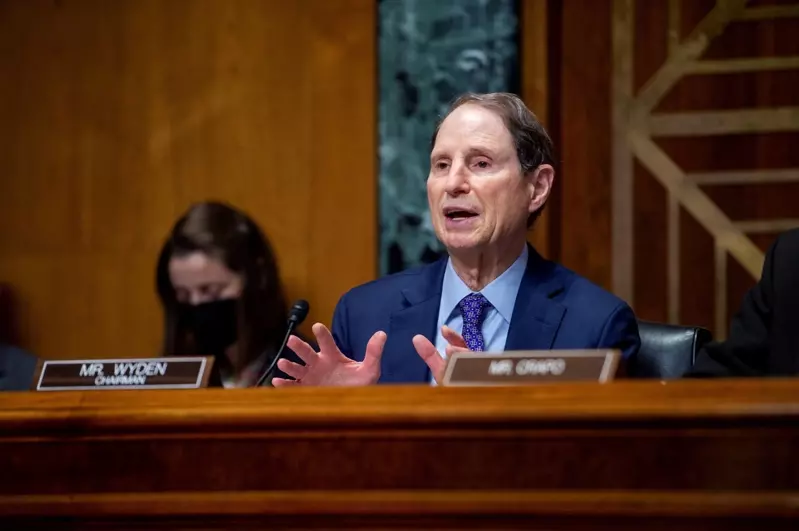
民主党籍联邦参议员魏登(Ron Wyden)现任参院金融委员会主席,为追求税负公平、向超有钱人升税不遗余力,但他儿子亚当‧魏登(Adam Wyden)则经营ADW Capital Partners对冲基金,父子俩为研拟中的向富人加税计划而大生龃龉,显见要向美国富豪增税将遭逢艰巨挑战。
纽约时报报导,小魏登的对冲基金显然是民主党很想增税的目标:规模虽小但成长迅速,拥有3亿3000万元资产,设址在纽约,公司登记在德拉瓦州,营运却在佛州,算是离岸「链接」(feeder)企业,让某些客户得以不被联邦课到税金。
因此,参院金融委员会力推加税,小魏注销面大声且激烈反对,也就无足为奇,可委员会主席正是他老爸。
为了变更税法、采取防范措施不让超级富豪利用漏洞逃税,魏登父子的争辩公开化,却凸显一个奇特现象:国会每次想对亿万富豪加税,只算有钱的人却急忙跳出来干预。
小魏登今年37岁,自称不是川普粉丝,也不痴迷于联邦众议员欧凯秀(Alexandria Ocasio-Cortez),政治立场为自由派,成长于华府,搬去佛州是因「不屑与人争食」。但他10月在CNBC露脸反对父亲向亿万富豪加税、不给逃税的提案;另外,小魏登10月在推特发文,指美国人如此醉心于富豪,「他(指老魏登)为何敌视我们?事实真相在大多数国会议员从无建树」,所以他猜想大概是出于没动脑子,就随意地想搞砸事情。
拜登总金额2兆2000亿元的社会、气候开支案搁在参议院里,老魏登竭尽全力让法案不死,但他儿子可是大声反对该法案;法条之一打算向大约700位美国超级富豪十年内加税5570亿元;目前那些富豪缴的税只算他们财富的零头,有些人甚至所得税一毛钱也没缴。
另有法条打算填掉所谓「附带权益」(carried-interest)漏洞,该漏洞容许一些对冲基金及私募证券经理人得以宣称,自己向客户收取的费用是资本利得而非收入,因此税率也就低得多。
合伙事业税负专家杰柯(Monte A. Jackel)表示,若按老魏登的构想去做,附带权益漏洞被补起来,小魏登无疑要缴更多税,现在只缴20%,未来可能要缴到37%。
老魏登没提到自己儿子,但认为不少百万富翁急着反对当前税改,是以为自己有朝一日会成为亿万富豪。致力于反对收入不均的专家凯乐赫指出,小人物替大人物出头,自古皆然;小生意店主抗议自己绝不会缴到的遗产税;社区信用合作社抗议一些针对大型银行的法规,这样子不仅扭曲极重要的政策讨论,还增加极少数超级富豪及大企业的利益,让他们得以扼杀华府的公共政策。
拜登放弃对美国亿万富翁征收“富人税”了
文章来源: 法广
10/29/2021
美国总统拜登为了让自己的社会和环境措施计划在国会得以通过,不得不同意将这一计划缩小一半。相关的妥协让拜登的“富人税”计划泡汤了。
10月28日星期四,拜登三次对亿万富翁们说,“支付您应交付的份额!”但是,尽管如此,这也无法掩盖这样一个现实:美国总统确实放弃了对拥有巨额财富的亿万富翁们征收“富人税”的计划。
9月16日,美国总统拜登在白宫发表讲话时称,美国正处于历史的“转折点”。他表示将对税收制度进行改革,向富人群体征收更多的税。
拜登曾经计划的富人税,是以23.8%的税率对美国700名亿万富翁的潜在的资本增值征税。根据法国经济学家加布里埃尔·祖克曼(Gabriel Zucman)的计算,这将导致地球上最富有的两个人埃隆马斯克(特斯拉)和杰夫贝索斯(亚马逊)在五年的时间内分别支付500亿美元和450亿美元的税。

由于拜登承诺不会加重年收入低于40万美元的美国人的负担,因此拜登宣布对企业和最富有的人实施一系列紧缩措施,以便为他的社会计划和环境计划提供资金。
但是,拜登是很难进行革命的。由于美国参议院的多数席位减少到了副总统哈里斯的额外投票,所以拜登几乎无法进行革命。
拜登早已经不得不放弃将联邦最低工资提高到每小时15美元。现在,为了让其社会和环境措施计划能够在国会得以通过,美国总统拜登不得不放弃对亿万富翁征收“富人税”。
除了“富人税”,拜登的将企业所得税税率从21%提高到28%的想法也被放弃了。
In the Biden Bill, the Billionaires Beat the Working Rich
One by one, tax proposals that would have slowed dynastic wealth have been tossed from the agreement.
By Neil Irwin
10/29/2021

In the end, it was the millionaires versus the billionaires. The millionaires lost.
Months of wrangling over how to offset the cost of the Biden administration’s signature social spending bill appeared to culminate in a chaotic Wednesday on Capitol Hill, as hugely consequential tax and spending provisions were either included in the final deal or left out.
The most striking thing about the tax provisions that made it into the framework President Biden announced on Thursday is how they preserve the ability of business owners to accumulate vast fortunes with minimal taxation — while extracting more money from the highest-paid people those owners employ. It is these “working rich,” as the investor Clifford Asness has called them, who would pay much of the bill for an expanded social welfare system.
Jeff Bezos, the Amazon founder who is worth nearly $200 billion, would see little change in his highly favorable tax situation. Andrew Jassy, who succeeded Mr. Bezos as chief executive and received about $36 million in compensation in 2020, is likely to owe more in taxes if the Democrats’ framework becomes law.
The billionaire owners of N.F.L. teams did fine. The commissioner of the league, Roger Goodell, said to be paid $40 million a year (although that has been bolstered by bonuses the last two years), will owe a lot more in taxes. And so will the 162 N.F.L. players who are set to be paid more than $10 million this year.
In the realm of fiction, fans of “Succession” can rest assured that the depraved scions of the media-conglomerate-owning Roy family will enjoy their wealth with little interference from the tax man. The highly compensated help — like the chief financial officer, Karl — will be paying more.
That is the simple conclusion to draw from the list of what is and isn’t in the compromise deal after it made it through marathon negotiations.
The deal includes a new surtax of five percentage points on income above $10 million and an additional three percentage points on income above $25 million. So a C.E.O. who makes $30 million would owe an additional $1.15 million in federal income tax over current law.
That could prove particularly meaningful for people who have a windfall income in one year or a handful of years. A lottery winner, or even a professional athlete or actor with only a few very high-earning years, would qualify. Earning $50 million in a single year would entail a considerably higher tax burden than $10 million a year for five years straight. The surtax could, among other things, create more incentive for employers to offer deferred compensation arrangements to their highest-paid workers.
Meanwhile, the owners of a company would continue to be able to accrue wealth as it became more valuable over time, and would owe tax on gains only if they chose to sell shares. The Democrats’ framework does not include any of several provisions that would have targeted those pools of wealth.
Most prominently, in recent days Democrats were seriously considering what they branded a “billionaires tax,” which would have required Americans with $1-billion-plus fortunes to pay capital gains tax on assets as their value rose, not just when those assets were sold.
The billionaires tax would have affected some 700 families, whereas 22,000 tax returns in 2018 reported income over $10 million, the threshold at which the surtax would apply.
But senators including Joe Manchin of West Virginia rejected the idea Wednesday, and it was scrapped in the final negotiating push. In truth, it was only the last in a series of proposals targeting dynastic wealth that did not make it into the agreement.
That includes eliminating “stepped-up basis.” At present, a person can accumulate assets over the years without paying tax on them, then pass them along to heirs whose cost basis is reset at their higher valuation. It is a mechanism by which large fortunes can be built and passed through the generations without much payment in taxes.
President Biden had proposed taxing unrealized capital gains of over $1 million at the time of a person’s death, a provision that did not make it into this week’s agreement. He also proposed raising the capital gains tax rate for those with more than $1 million in gains. Neither is part of the tentative deal.
The same can be said of eliminating the carried interest loophole, which allows private equity executives and others who manage investments to, in effect, treat earnings as low-tax capital gains rather than as higher-taxed income.
The tax code favors investment income over wage income in a variety of ways, most notably the 20 percent top tax rate on long-term capital gains that is far below the 37 percent top income tax rate.
The logic is that this incentivizes investments that strengthen long-term economic potential — that the tax code should give people reasons to put capital at risk in order to grow the size of the economic pie. But one result is that top wage earners face higher tax rates and less ability to delay or avoid taxes altogether than those who make more money from investments.
It shouldn’t be too surprising then that successful high earners aim to turn small fortunes made from their labor into large fortunes tied up in capital. You see it in business ventures owned by media stars like Oprah Winfrey and Tyler Perry, and athletes like LeBron James and Tom Brady.
The age-old tension between labor and capital might not have the same feel when the laborers in question are richer than most people could ever dream. But the last few days on Capitol Hill suggest that in a political battle between the working rich and the truly wealthy, it is the wealthy who have the political juice.
Billionaires tax faces constitutional, political hurdles
The question for tax writers and party leaders is whether they can thread those needles in drafting the details.
By Jonathan Allen
10/28/2021
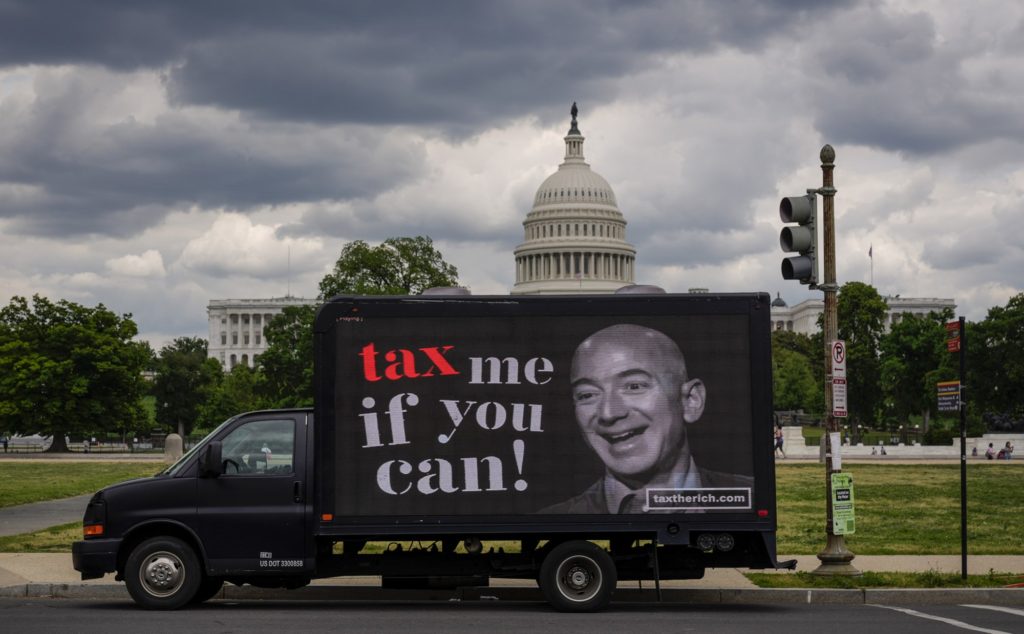
WASHINGTON — Democrats’ plan to tax billionaires excites the party’s base. It could be attractive to Sen. Kyrsten Sinema, D-Ariz. And it might be unconstitutional.
Party leaders have been scrambling to find alternative ways to pay for part of the trillion-dollar-plus “Build Back Better” bill because Sinema has ruled out raising income tax rates on high-end earners and corporations.
A proposal released Wednesday morning would tax the paper investment gains of the ultra-wealthy. The idea is to capture revenue from billionaires whose “tradable” assets — like stocks — appreciate in value each year without being taxed. Under current law, those gains aren’t “realized” and taxed until the underlying assets are sold.
The tax would also apply to the tradable assets of people who earn $100 million or more in three consecutive years, but it would not apply to property such as real estate.
An ally of Biden’s, Rep. Brendan Boyle, D-Pa., a member of the tax-writing Ways and Means Committee, has worked on a version of the wealth tax with Sen. Elizabeth Warren, D-Mass. He said in an interview Tuesday that it is easy for the government to tax all of the earned income of workers, while the country’s wealthiest investors can simply earn value by holding on to untaxed investments.
“That ends up being very unfair,” he said, adding that he is confident that the plan would survive constitutional muster.
Tax law experts disagree about whether such a provision would be consistent with the Constitution, but Daniel Hemel, a University of Chicago Law School professor, said Democrats would be taking their chances with a conservative Supreme Court.
“This approach makes the Democrats’ plan for taxing the wealthy contingent upon Brett Kavanaugh, and there are lots of constitutionally uncomplicated ways to tax the very rich,” Hemel said. “But it seems like Democrats are coalescing around one of the approaches for which there are genuine constitutional doubts.”
The question for tax writers and party leaders is whether they can thread both the political and the constitutional needles in drafting the details.
Clear majorities of Americans favor taxing the rich more. In a Morning Consult/Politico poll last month, 68 percent of registered voters said they support raising taxes on the wealthiest people. But few if any independent surveys delve into the question of taxing the unrealized gains of billionaires.
Still, not every Democrat in Congress is sold on the latest approach yet.
“It’s new, so implementation becomes an issue,” said Sen. Jon Tester, D-Mont., who added that he hasn’t passed judgment one way or the other. “I’ve really got to study it.”
Senate Finance Committee Chairman Ron Wyden, D-Ore., the author of the provision, said he is confident that it would survive legal challenges. As proof, he cited lower court rulings in which the taxation of unrealized gains from futures contracts “has always been upheld.”
Legal scholars say that even if courts ruled in favor of taxing unrealized gains at their increased values — known as a “mark to market” assessment of value — it’s unclear how they would approach the constitutionality of a tax conditioned on the wealth of the taxpayer rather than on his or her income.
“There are plausible arguments on both sides,” said Andrew Hayashi, a professor who is the director of the University of Virginia’s Center for Tax Law.
When the Constitution was ratified, it required that “direct taxes” be apportioned among the states “according to their respective numbers,” meaning each state would have to cough up an amount proportional to its population. The 16th Amendment created an exemption that allows the federal government to collect income taxes.
The basic questions for the courts are whether a federal tax can be based in part on wealth and whether paper gains on assets can be taxed as income before they are sold.
From a political perspective, Democratic leaders may end up caring more about whether they can pass the provision than whether it would survive a court challenge. The billionaires tax can’t be ruled unconstitutional unless it has first become law.
However, the possibility that a successful court challenge would add to the deficit could scare off lawmakers who want to ensure that the “Build Back Better” measure remains deficit-neutral. Biden has promoted his plan as having no cost, because its spending would be offset by new revenue, and Sen. Joe Manchin, D-W.Va., a key swing vote on the overall legislation, has emphasized balancing the revenue and spending.
Still, it is easier for Democratic leaders to count votes than it is for them to predict court rulings.
“I’d give it a 50 percent chance,” said Hemel, who called the wealth tax a “good idea” in a Washington Post op-ed. “We’ve got lots of other options that are 100 percent chance.”
富豪税恐违宪 富人宁花数百万打官司 有机会省数10亿
世界新闻网 | 记者颜伶如/综合报导
10/28/2021
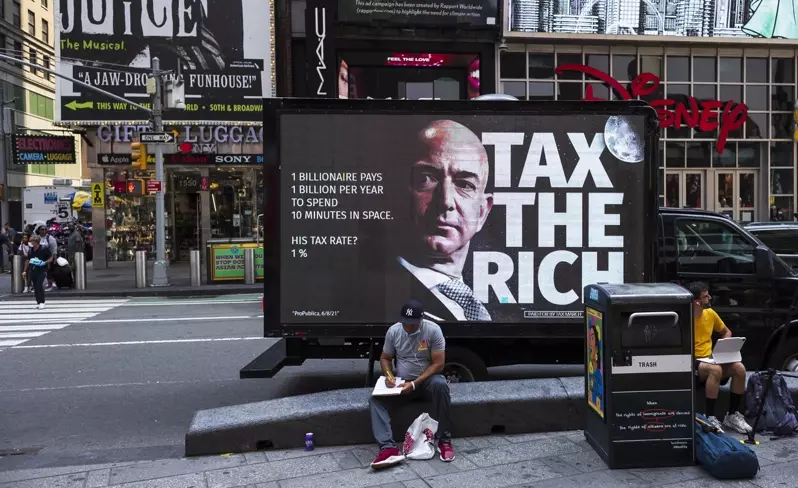
民主党快马加鞭推出的富豪加税提议,打算对富豪未变卖持股每年增值课税;华尔街日报分析,这项提议可能面临的最大障碍就是美国宪法,倘若实施,几乎可以确定将面临司法诉讼;富豪纳税人提告的诱因极大,因为花数百万律师费用,有机会省下数十亿税金。
年收入连续3年超过1亿也在内
根据27日上午公布的民主党提议草案,加税对象为全美最有钱富豪的可交易资产(tradable assets),例如每年增值但未脱手卖出的股票;民主党提案适用对象还包括年收入连续三年超过1亿元的民众,房屋等不动产并不在这波加税范围之列。
目前税法规定,资本利得税(capital-gains taxes)是在股票等资产卖出之后才课征;宪法起草时,规定各州依人口比率收取直接税(direct taxes),宪法第16修正案则赋予联邦政府征收个人所得税的权限。
民主党加税提议可能遭逢的反对论点为:对亿万富豪征收未实现资本利得税(unrealized capital gains tax),明显逾越第16修正案范畴。
保守派倡议组织「全国纳税人联盟基音会」 (NTUF)税务政策与诉讼部副总监毕夏普-汉契曼(Joseph Bishop-Henchman)指出,富豪加税没有采循分配税务原则,而且是针对未变卖资产课税,条款还具有强制性,「自然会引发违背宪法的严重质疑。」
加税对象总计不到1000人
符合民主党提议内容的加税对象总计不到1000人,其中包括财产超过10亿元的富豪,以及连续三年个人年收入超过1亿元的民众。
民主党及某些法律学者指出,有信心富豪加税提议符合宪法,可以认定为某种可扣税所得税(allowable income tax)或某种形式的间接税(indirect tax),例如遗产税(estate tax);但如果官司上诉到最高法院,大法官将如何裁定,则是未知数。
华尔街日报指出,宪法虽然赋予国会征税的广泛权限,但对于如何征税却有严格限制,例如规定必须为各州之间分担的直接税(direct taxes);自从南北战争以来,国会都不曾加征过直接税兼分配赋税(apportioned tax )。
最高法院在一项1920年判例当中裁定,某些股息(stock dividends)不能视为收入(income),持股必须出售才算获取资本利得,这项判决迄今并未被完全推翻。

北美法律公益讲座安排
时间:周二到周五 晚间
5:30-7:00(西部时间)8:30-9:30(东部时间)
周二:如何准备遗嘱材料(遗嘱workshop)
周三:数据泄露和个人身份保护&事业机会说明会
周四:家庭法和婚姻法(周律师)
周五:人身伤害和索赔(朱律师)
Zoom:6045004698,密码:请私信或群里@我
另外:周三6:30(西部时间)
专题:99%华人移民不知道的法律问题(粤语专场)
Zoom 95190929213,密码:私信或群里@我

白宫分析:美国最富人纳税额远低于他人
文 / 林煇智
9/23/2021
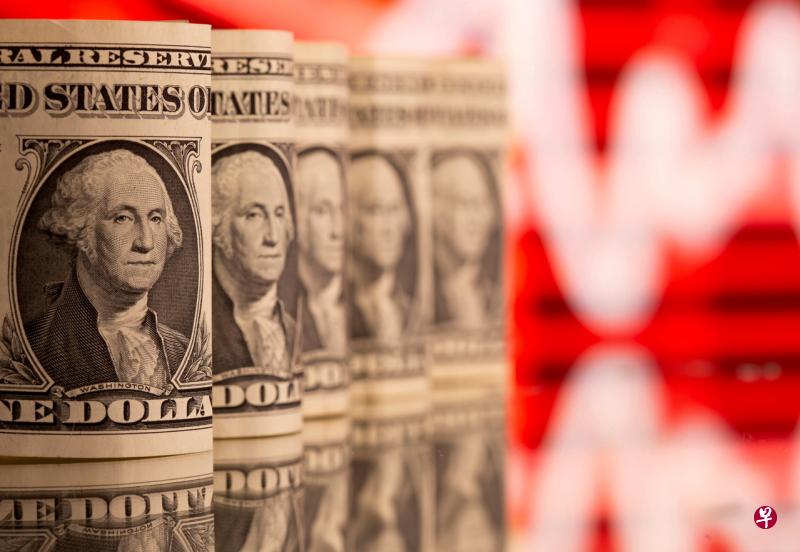
(早报讯)白宫一份新经济分析报告显示,美国最富人的纳税额远远低于其他人。这份报告将为美国总统拜登推动向富人增税的计划提供有力的支持。
路透社报道,拜登周三(9月22日)在推特上写道:“我对超级富豪和大公司不支付其公平的税收感到厌烦。”
据报道,拜登正在推动一项3.5万亿美元(4.7万亿新元)的法案,该法案将通过让超级富豪和企业缴纳更多税款,扩大联邦在应对气候变化、降低儿童护理成本和减少贫困方面的努力。
白宫两位经济学家的分析表明,全国最富的400个、净资产在21亿美元至1600亿美元之间的家庭,平均每年支付的有效联邦所得税率略高于8%。
报告发现,2010年至2018年,这400个家庭,如果包括其财富价值的上升,总共赚取1.8万亿美元,支付的联邦个人所得税则估计为1490亿美元。
白宫对美国超级富豪和亿万富翁所支付税额的分析远低于其他分析。白宫的税率计算使用了来自国内税收局和美联储消费者财务调查的高收入者的收入、财富和支付的税款数据。
White House: 400 wealthiest families paid average tax rate of 8.2 percent
BY NAOMI JAGODA
9/23/2021

The White House released an analysis on Thursday estimating that the 400 wealthiest American families paid an average federal income tax rate of only 8.2 percent on $1.8 trillion of income from 2010 to 2018.
“Two factors that contribute to this low estimated tax rate include low tax rates on the capital gains and dividends that are taxed, and wealthy families’ ability to permanently avoid paying tax on investment gains that are excluded from taxable income,” the report said.
The analysis, which was authored by economists from the White House Council of Economic Advisers and the Office of Management and Budget, comes as Democrats in Congress are working on a tax-and-spending package that would advance much of President Biden‘s agenda. Biden has proposed a number of tax increases on the wealthy and corporations in order to pay for his spending priorities in areas such as health care and child care, and he is seeking to prevent moderate congressional Democrats from scaling back these proposals.
The White House analysis is based on IRS statistics, the Federal Reserve’s Survey of Consumer Finances, and Forbes magazine estimates about the 400 wealthiest Americans.
The White House noted that its estimate of the tax rate for the wealthiest households is “much lower” than other groups’ estimates of top income tax rates. The administration’s takes into account income from unrealized capital gains, which is not typically included in this type of analysis.
The report highlighted Biden’s proposals to raise the top capital gains rate and end the “stepped-up basis” tax preference that benefits heirs as ways to address the fact that wealthy Americans pay a low tax rate.
Legislation approved by the House Ways and Means Committee earlier this month included a smaller capital gains increase than Biden had proposed and does not repeal stepped-up basis. But Senate Democrats are expected to offer their own ideas for how to pay for the spending package, and Finance Committee Chairman Ron Wyden (D-Ore.) has indicated that he wants to prevent billionaires and their heirs from avoiding taxes on stock gains.
Wyden said in a statement Thursday that “the White House’s new report is shocking but not surprising.”
Top 1 Percent Avoid Paying $163 Billion in Taxes Each Year: Treasury Department
By Leia Idliby
9/08/2021
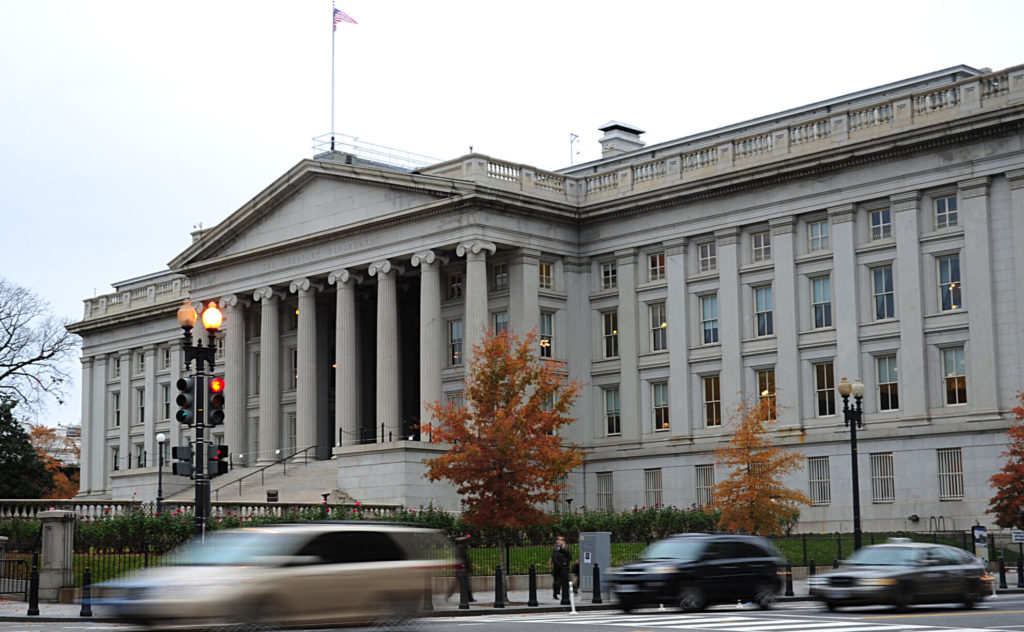
The Department of Treasury has found that the wealthiest one percent of Americans have avoided paying $163 billion in taxes per year.
The Treasury’s analysis, titled “The Case for a Robust Attack on the Tax Gap” and written by Deputy Assistant Secretary for Economic Policy Natasha Sarin, opens by explaining, “A well-functioning tax system requires that everyone pays the taxes they owe.”
The report argues that narrowing the tax gap, which accounts for the difference between owed and collected taxes, will lead to a more equitable economy, as it currently “totals around $600 billion annually,” which would lead to “approximately $7 trillion of lost tax revenue over the next decade.”
Sarin’s report includes a table detailing tax data from 2019, which ultimately found that more than $160 billion lost annually is “from taxes that top 1 percent choose not to pay.”
The report goes on to argue that in order to collect owed taxes and enforce laws against high earners and corporations, the IRS needs funding to update their technology and to hire agents able to decipher “thousands of pages of sophisticated tax filings.”
“It also needs access to information about opaque income streams — like proprietorship and partnership income — that accrue disproportionately to high-earners,” she wrote.
The reports comes as President Joe Biden’s administration is pushing for a significant increase to the IRS budget. The White House has specifically called for $80 billion of investment over the next ten years, claiming it would help the government catch tax evasion schemes.
“Giving the IRS the information and resources that it needs will generate substantial revenue,” Sarin concluded. “But even more importantly, these reforms will create a more equitable, efficient tax system.”
Top 0.1% Tap Private Placement Life Insurance to Avoid Biden’s Taxes
Financial Advisor IQ
9/04/2021
The richest Americans who want to avoid paying higher taxes under President Joe Biden are tapping a niche product that has become more generally available, cheaper and flexible in recent months.
Some advisors who cater to the top 0.1% say that private placement life insurance is “dominating conversations,” according to Bloomberg.
Assets held in PPLI policies are tax-free, and when a policyholder dies, their heirs inherit the policy’s contents tax-free, Bloomberg writes. Assets inside a PPLI can also be brorrowed against or rolled into another insurance product, according to the news service.
PPLI policies, however, have complicated rules to qualify as life insurance to take advantage of the tax benefit, can fail if not properly funded and taking assets out comes with a heavy tax burden, Bloomberg writes.
“Clients are very interested in this right now,” said Tara Thompson Popernik, director of research for Bernstein Private Wealth Management’s wealth planning and analysis group, according to Bloomberg. “It takes some education to get them to wrap their heads around the concept, because it’s not just buying life insurance.”
But it’s not just the threat of Biden going after billionaires and millionaires to pay their “fair share” that’s making the loophole: a late-2020 insurance law change made PPLI “more powerful,” while competition among insurers has pushed down costs while increasing the choice of products, according to Bloomberg.
“Private placement life insurance poses a serious obstacle to President Biden’s goal of guaranteeing that high-income individuals pay tax on large gains at least once per lifetime,” said Daniel Hemel, a law professor at University of Chicago, according to the news service. “PPLI is a massive loophole — entirely legal, easy to exploit, and politically very hard to close.”
How Does Private Placement Life Insurance Work?
By Maxime Croll
9/04/2021
Private placement life insurance (PPLI) is a niche solution designed for wealthy individuals in high tax brackets who have a few million dollars available to commit.
Many times, those for whom PPLI was designed want to invest in hedge funds, but hedge funds can carry significant taxes: If the wealthy individual invests in them in their personal name, in a taxable account or in a trust, every trade the manager makes can generate a capital gains distribution, and any ordinary income is taxable at particularly high rates.
That’s a serious issue at higher income levels, where combined federal and state income and capital gains taxes can easily add up to nearly 50% in some jurisdictions.
One increasingly popular solution: Hold these assets within a life insurance policy.
Who does private placement life insurance make sense for?
PPLI isn’t for everybody. A good candidate for this strategy is someone with annual income in the millions, a net worth of $20 million or more or someone who controls a business that puts them in that category.
Life insurance comes with a number of important tax benefits, which can be major considerations for those in the highest tax brackets. But standard life insurance policies you can get from your neighborhood agent don’t contain the hedge funds, funds of funds and other alternative investments that these investors require for their own diversification and investment needs.
That’s where privately placed life insurance comes in: Wealthy families, family foundations, trusts, corporations and banks work with hedge funds and money management firms to create their own life insurance contracts, designed to reduce their tax burdens.
The idea is to combine the financial advantages of highly taxed hedge funds and similar investments with the tax advantages of life insurance. There are insurance and administrative costs associated with the life insurance contract, but the tax savings in a properly structured life insurance policy, plus the death benefit itself, more than make up for the additional insurance and administrative costs. And the insured can generally access most of the funds anyway, tax-free, via policy withdrawals and loans.
When a wealthy investor in a very high tax bracket wants to invest in hedge funds anyway, it often makes sense to create a privately placed life insurance policy to shelter the individual from taxes.
Qualifications to purchase PPLI
While anyone can buy a variable universal life insurance policy (as PPLIs are structured), PPLIs are an unregistered securities product. As such, agents can only present them to accredited investors.
Under current Securities and Exchange Commission (SEC) regulations, accredited investors are those with a net worth of at least $1 million (excluding primary residence), or income of at least $200,000 in each of the preceding two years. Married couples must demonstrate income of $300,000 in each of the preceding two years.
Ultimately, the owner is typically an individual or a trust. Holding the policy in an irrevocable trust allows the insured to keep the policy out of their taxable estate, possibly reducing eventual estate tax liability, though they give up rights to access the cash value prior to death.
In reality, the typical PPLI candidate or family has:
- A high net worth
- The ability to fund $1 million or more in annual premiums for several years, at least — $3 million to $5 million is typical
- A desire for hedge fund or alternative investment exposure
- Highly tax-inefficient investments
- High state and local income taxes in addition to federal (advisors should be alert to the effect of any state premium taxes on the strategy)
- A desire to shelter assets from creditors
It’s important to be able to make a significant investment over the first several years as this initial investment of premium “primes the pump,” meaning that, assuming the underlying investment subaccounts perform adequately, the insured’s policy can become self-funding. That is, growth in its cash value covers the cost of insurance. At that point, the insured can cease committing premium if they choose.
Where to buy private placement life insurance
Professional wealth managers tend to recommend vendors. However, some of the most prominent providers of PPLI services and insurance-dedicated funds (IDFs) include BlackRock, Wells Fargo Private Banking, John Hancock, Zurich, Crown Global and Pacific Life.
How private placement life insurance works
Privately placed life insurance is generally structured as a variable universal life insurance policy, meaning:
- Premiums are flexible. Policyholders can pay as much or as little premium as they like, whenever they like.
- The cost of insurance is deducted from the cash value in the policy subaccounts each month or each year.
- To keep the policy in force, the owner must pay enough premium to maintain enough cash value to cover the cost of insurance.
- If the cash value reaches zero, the policy will lapse.
The agent who sets it up will usually structure the policy to maximize cash value accumulation while keeping the death benefit (and thus the cost of insurance) relatively low. The policy owner, working with their insurance professional, then pays as much premium into the policy as possible every year.
The client gets the benefit of the tremendous tax advantages of the life insurance contract:
- Tax-free death benefits to heirs
- Tax-deferred growth of cash value
- Tax-free growth of dividends (if applicable)
Meanwhile, the insured still has access to accumulated cash values, which can be used for any purpose and accessed at any age. There are no penalties for accessing the cash value before turning age 59 1/2, as there are with annuities and with individual retirement accounts (IRAs). In addition, there are no required minimum distributions, as there are with annuities, IRAs and retirement accounts.
PPLI investments
As discussed, the best investment candidates for a PPLI policy are those that are tax-inefficient. They generate substantial current taxable income, imputed (phantom) income or capital gains unless they are held in a retirement account or life insurance vehicle that provides tax-free growth.
PPLI owners and their advisors either choose specific investments for their portfolios or carefully select money managers to manage their portfolios within the policies. Possible investments can include venture capital, real estate investment trusts, private equity funds, funds of hedge funds and commodity funds, or any fund with extremely high turnover rates that generate substantial short-term capital gains.
But that doesn’t mean anything goes. PPLIs must still meet IRS standards for investor control, insurance and diversification.
Investor control. Individual policy owners and family offices are prohibited from exercising influence over the specific investment decisions of the fund managers. If the owner exercises too much control, the IRS may disqualify the tax advantages of the policy. Current case law requires managers to operate on an independent, discretionary basis. Assets held in PPLI policies are not designed to be separately managed accounts, and they should not be treated that way.
Insurance standards. The life insurance structure allows owners to sell insurance-dedicated funds within the policy as often as they like and replace them with other qualified investments, without tax consequences. IDFs are financial products that are designed specifically for the PPLI market. Hedge funds and funds of funds often create a version of their flagship offering as an IDF that uses all the same strategies and managers but is also managed to adhere to laws and regulations that govern insurance portfolios.
Diversification requirements. Investments must also meet diversification rules:
- No single investment may make up more than 55% of the insurance subaccount portfolio.
- No two investments may constitute more than 70% of the portfolio.
- No three investments may constitute more than 80% of the portfolio.
- No four investments may constitute more than 90% of the total assets of the account.
Therefore, the portfolio must, in practice, contain a minimum of five distinct investments in order to fully qualify as life insurance. Otherwise, the IRS will disqualify the policy, and the owner will lose the tax advantages of the life insurance structure.
Accessing your money in a PPLI
Policy owners can withdraw from their cash value or borrow against it at any time, for any purpose.
Withdrawals Withdrawals are tax-free up to the basis of the policies. So owners can get back their premiums, minus fees, without tax consequences — as long as their subaccounts’ performance has kept up with the cost of insurance. If the cash value is greater than the owner’s basis in the policy — that is, what they have paid in — then additional withdrawals in excess of basis are taxed as a gain.
Policy loans You can borrow against the cash value of the policy with no underwriting or credit check. The loan is secured by the policy’s cash value. This makes the policy a solid choice for emergency funds. The loan does not have to be paid back, though the policy owner may want to replenish funds borrowed from the policy so as to maximize long-term tax-free growth.
Because the loans are secured by payments already made to the insurer, interest rates are often very low. Borrowers should be aware that interest does accrue, and borrowing will reduce any death benefits paid out unless the loan is paid back to the policy.
Contribution limitations and modified endowment contracts
The government imposes limits to how much premium the owner can contribute to the policy in a given year in order to help ensure life insurance is used for its intended purpose, as opposed to a tax shelter. The result of the contribution limit is the “seven-pay” test. If policyholders contribute so much premium to their policies that the policy would be paid up in less than seven years, it becomes a modified endowment contract (MEC). This will disqualify the policy from many of the tax advantages on withdrawals and loans:
- One of the great things about insurance policies is that when you withdraw cash value from an in-force life insurance policy, you get the benefit of first-in, first-out (FIFO) taxation. This allows you to withdraw as much as you’d like, up to your basis in the policy (the amount you have contributed), tax-free. If your policy becomes an MEC, this advantage disappears. Instead, the IRS will deem you to be withdrawing interest first, not your basis. This interest is taxable.
- Likewise, while the law allows you to take tax-free loans from a life insurance policy, once your policy becomes an MEC, those loans become taxable as income.
- Additionally, once your policy becomes an MEC, any withdrawals prior to age 59 1/2 become subject to a 10% early withdrawal penalty, just as with a qualified annuity or a 401(k).
Your policy documents should specify the annual MEC limit.
| Life insurance contract | MEC | |
|---|---|---|
| Premiums | Limited by seven-pay test | Not limited except by contract |
| Loans | Tax-free for life of policy | Taxable as income |
| Withdrawals | Tax-free up to basis (FIFO) | Taxable until all interest/gains are withdrawn |
| Death benefit | Tax-free | Tax-free |
| Death benefit amount | Usually kept small in PPLI to maximize growth of cash value | Used to maximize death benefit |
How are PPLI policies different from retail life insurance?
Structurally, privately placed life insurance is identical to a conventional variable universal life insurance policy. What sets the PPLI apart is the assets held in the subaccount: An everyday retail customer will choose from a limited menu of subaccount investments offered by the life insurance company.
But when you buy a PPLI, you can customize your investment subaccounts. You can include nearly any investment imaginable — from index funds to hedge funds. Your registered investment advisor or wealth manager can help design the investments in your menu of subaccounts.
Tax and other benefits of PPLI
High-income individuals are very tax-sensitive. The ordinary income tax rate on incomes above $518,401 in 2018 was 37%, plus additional Affordable Care Act taxes on high-income individuals. When you add in state and local income taxes in some jurisdictions, the income tax bite for high-income families could add up to nearly 50%.
The heart of the PPLI strategy lies in the tax advantage. The PPLI essentially converts a very tax-inefficient investment, such as a hedge fund, into a very tax-efficient one for the high-net-worth investor.
| Hedge fund held in personal account (typically) | Hedge fund held within a PPLI | |
|---|---|---|
| Death benefit | N/A | Tax-free death benefit |
| Income | Taxable at 37%-50% | Tax-free for life of policy |
| Short-term capital gains | Taxable at 37%-50% | Tax-free for life of policy |
| Long-term capital gains | Taxable at 20% | Tax-free for life of policy |
| Imputed income | Taxable at 37%-50% | Tax-free for life of policy |
| Transfers to other life policies | Taxable, gain over basis | Tax-free under IRC Section 1035 |
| Transfer to annuities | Taxable, gain over basis | Tax-free under IRC Section 1035 |
| Creditor protection | None | Enhanced |
| Estate tax treatment | Taxable unless in irrevocable trust | Taxable in estate of owner unless in irrevocable life insurance trust |
| Tax loss harvesting strategies | Investors can sell losers to offset capital gains | N/A, though losing policies can be surrendered |
| Treatment at death | Subject to probate | Bypasses probate — death benefit goes to beneficiaries in a matter of days |
This strategy neutralizes the impact of current income by placing the assets within a life insurance policy, with tax advantages similar to a Roth IRA. Assets within the policy enjoy tax-free growth for as long as they remain in the policy.
In addition to the tax benefits that generally accrue to life insurance cash values, PPLI policies often provide a number of additional benefits:
- Lower commissions. The cost of insurance and commissions is low compared to most retail life insurance products: Issuers are more interested in managing your money than in generating large upfront commissions.
- No surrender charges. Because they don’t rely on a commission-paid insurance sales force as traditional insurance companies do, they don’t need to recoup commission costs by imposing surrender charges.
- Phantom income is not taxed. Some investments generate a tax liability to the owner, even though there is no actual cash income distributed. For example, a zero-coupon bond pays no income until it matures, but the IRS forces taxpayers to pay taxes on imputed income as the bond approaches maturity. If the asset is held in a PPLI, the tax on imputed or phantom income is neutralized.
- Tax compliance is easier. Tax reporting is a constant headache for hedge fund investors and those who hold interests in limited partnerships and master limited partnerships. By holding these assets within a PPLI, the taxpayer can eliminate having to deal with K-1 reports and other reporting requirements.
- Creditor protection. Cash value life insurance is a proven way to shelter assets from creditors. Life insurance and annuities enjoy substantial asset protection in every state, and in some states, like Florida and Texas, creditor protection is unlimited. In some cases, PPLI life insurance assets are held offshore — placing these assets out of the reach of U.S. courts. No U.S. court can force a foreign company to release funds to a creditor.
新媒体广告策划
往微信群丢名片、砸海报、甩二维码
瞬间被踢飞,或者没人理?
资讯软文营销
你的文案专家
无论你是房地产经销、贷款专员,
还是保险经纪,或从事其他行业
我们将为你——
根据投放渠道、匹配群主题
打包定制资讯类带广告文案
配套地区、行业渠道投放
千群代发,精准推广
为你的事业助推
可扫码加小编微信:↓

